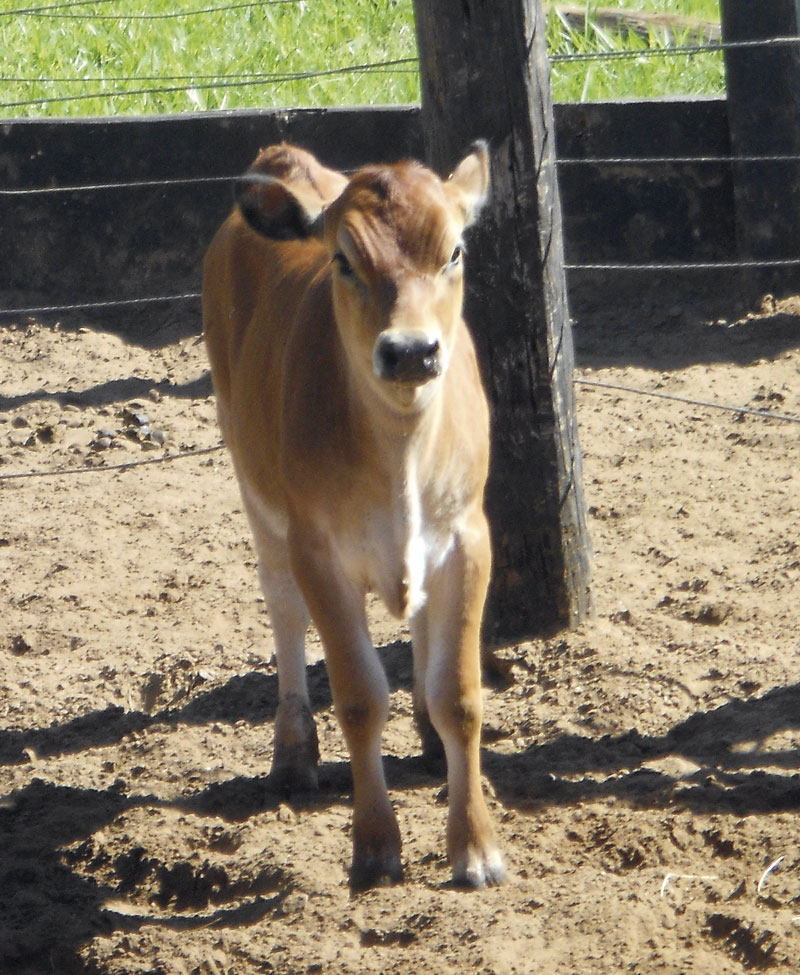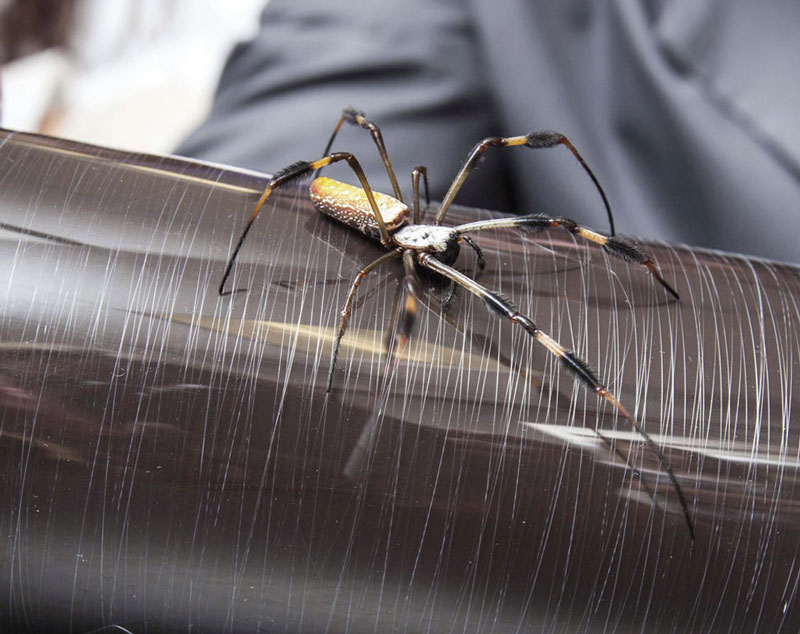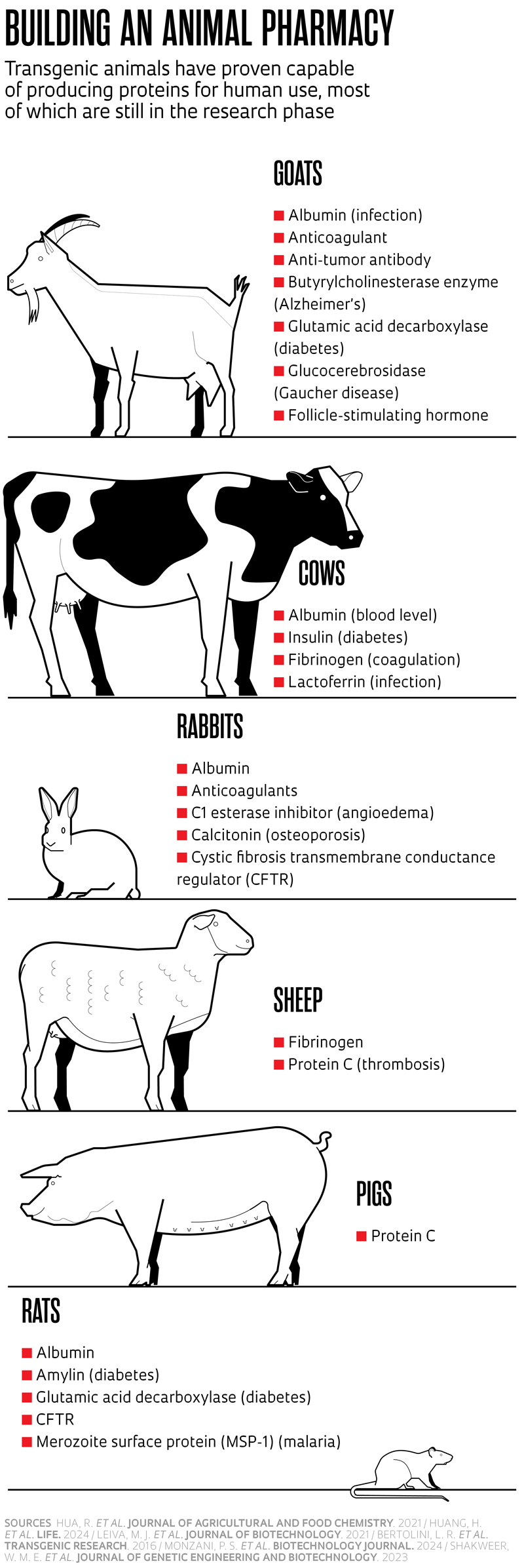In an article published in the Biotechnology Journal in March this year, scientists from the University of São Paulo (USP), the University of Northern Paraná (UNOPAR), and the University of Illinois, USA, showed that a transgenic cow they created had produced milk containing human insulin. The hormone, which controls blood glucose levels, is crucial for people with diabetes. The study, a proof of concept, was not continued, but it supported the findings of other research groups that medicines for human use could be produced in the mammary glands of genetically modified cows, goats, and rabbits (see infographic).
No drugs are yet produced with this method in Brazil, but the European Medicines Agency (EMA) and the US Food and Drug Administration (FDA) approved the first medicine of this kind, a recombinant human antithrombin, in 2006 and 2009 respectively. Produced in the milk of transgenic goats by American pharmaceutical company LFB Biotechnology, it is recommended for people with hereditary deficiency of the antithrombin protein, which inhibits blood clotting and reduces the risk of blood vessel obstructions and heart attacks.
Another human recombinant protein, extracted from the milk of transgenic rabbits, was approved for sale in Europe in 2012 and in the USA in 2014. Produced by Dutch biopharmaceutical Pharming Group and American company Salix Pharmaceutics, the drug is indicated for hereditary angioedema, a rare disease caused by deficient production of a blood protein called C1 esterase inhibitor.
More recently, in 2020, the FDA approved another protein made by LFB that improves blood clotting. It is produced in the mammary glands of transgenic rabbits. In addition to these three medicines already on the market, several other proteins for human use have been experimentally produced in animals, including in Brazil.
Efforts to create Brazilian transgenic milk containing human insulin began in 2008, at the School of Animal Science and Food Engineering (FZEA) at USP’s Pirassununga campus. Veterinarian Flávio Meirelles and biologist Paulo Monzani began developing a type of artificial chromosome (a plasmid) using a gene that can activate the production of human coagulation factor IX. The plasmid was inserted into a virus, which incorporated itself into the DNA of a fibroblast, a type of cell that relatively easily accepts foreign materials. The genetically modified fibroblast fused with a female reproductive cell called an oocyte, without a nucleus, and the embryo it began to form was then transferred to the uterus of a cow. In 1996, a similar process was used to create Dolly the sheep, the first animal cloned from an adult cell of another sheep.
Two calves genetically engineered to produce human coagulation factor IX were born in 2010, but died soon after. Meirelles and Monzani then began working with a group led by UNOPAR veterinarian Otavio Mitio Ohashi to produce transgenic cows capable of formulating drugs such as human insulin. At UNOPAR, Monzani developed other plasmids, including for insulin, incorporated into fibroblasts from a Jersey cow.
“Several embryo transfers failed,” says Meirelles. “Cloning is a difficult process.” After several attempts, a cow with the human proinsulin gene was born in 2014 and raised on a farm in the interior of Paraná owned by UNOPAR founder Marco Laffranchi (1936–2015). After various reproductive techniques failed to impregnate the cow, it was hormonally induced to lactate and began producing milk containing human insulin. An unexpected event, however, interrupted the research: “The cow died in the pasture in 2022, possibly bitten by a snake,” laments Monzani.
With no funding, the study was ended, but Meirelles remains convinced that the mammary glands of cows, goats, and other farmed animals can offer an excellent environment—formally known as a bioreactor—for the production of medicines for human use: “The proportion of transgenic proteins in milk is in the order of grams per liter, a much higher yield than more conventional techniques.”
Research is commonly disrupted in this field. In 2007, a team from the Argentine company Biosidus announced the birth of four Jersey cows capable of producing milk containing human insulin (see Pesquisa FAPESP issue nº 147). At the time, it was said that 25 cows would be enough to supply Argentina’s entire demand for insulin, at a price at least 30% lower than insulin produced via other means. Seventeen years later, there has been no more news about the company’s program — Pesquisa FAPESP contacted Biosidus for a comment, but received no response.
The topic was addressed in a report on agricultural biotechnology in Argentina published by the US Department of Agriculture in December 2022. “Although there are regulations for the approval of genetically engineered animals, there is no commercial production in Argentina, neither for agricultural purposes nor for biomedical research, pharmaceutical production, or organ production for transplantation,” says the document. The report also notes that interest in transgenic animals among producers has declined in recent years, after European legislation prohibited the import of transgenic animals or products.
Milk from transgenic cows has also been used experimentally to produce human growth hormone, albumin, monoclonal antibodies against cancer, and proteins that facilitate blood clotting. Papers like the one published by the USP group do not usually include information on the yield, but in 2014, scientists at the University of Vermont, USA, experimenting with transgenic female mice reported that they had obtained 8.1 grams of human insulin per liter of milk (g/L).
Since the 1980s, this essential hormone for controlling diabetes has been produced by cultivating genetically modified Escherichia coli bacteria. One of the few companies in the world that mastered the technique of producing insulin via E. coli was Biobrás, founded by researchers from the Federal University of Minas Gerais (UFMG). It was purchased by Danish pharmaceutical company Novo Nordisk in 2001 and later shut down. The former directors of Biobrás went on to found Biomm, which imports insulin (see Pesquisa FAPESP issue nº 302). Currently, all the insulin used in Brazil is imported.

The cow whose milk contained human insulinPaulo S. Morzani
The insulin yield from E. coli is 0.009 g per liter of culture medium, according to a review of microorganism-based insulin production techniques published in the journal Microbial Cell Factories in October 2014. A comparison made in the journal Transgenic Research in June 2016 highlighted that recombinant protein obtained from animal milk would be eight times cheaper than from cultures of Chinese hamster ovary cells—the current source.
“Even if they achieve good initial results, many projects stop because they are time-consuming and expensive,” explains Maria Angélica Miglino, a veterinarian from the University of Marília (UNIMAR) in the interior of São Paulo. Miglino was not involved in the USP project, but about a year ago, Monzani gave her a sample of bovine mammary epithelial cells. The aim was to create an artificial mammary gland in a laboratory, capable of both producing milk and serving as an experimental model for studying animal and human diseases. The research is being carried out by Mozambican veterinarian Fernando Chissico for his PhD at UNIMAR, supervised by Miglino.
“The big problem with recombinant proteins produced in animal milk is not the technology, but regulation,” points out Brazilian biologist Luciana Relly, scientific director at C&L Biotech, a US-based consultancy that works with transgenic animals. “Drugs produced by genetically engineered animals have to undergo all phases of preclinical and clinical trials, as well as complying with production criteria to ensure that the animals and recombinant proteins are free of any contamination.”
Between 2006 and 2015, Relly was one of the coordinators of a study at the University of Fortaleza (UNIFOR), Ceará, that culminated in the birth of a transgenic goat capable of producing milk containing the enzyme glucocerebrosidase, a deficiency of which causes Gaucher disease (see Pesquisa FAPESP issue nº 236). Despite being widely reported and celebrated, the research was discontinued. “The federal government preferred to negotiate to transfer production technology from an Israeli company, but no progress was made,” she explains. Without funding, the UNIFOR group disbanded.
Relly moved to the Pontifical Catholic University of Rio Grande do Sul (PUC-RS) in 2015. Five years later, she moved to the USA. Her journey also led her to a conclusion: “The mammary glands are an excellent bioreactor, especially for proteins that could not be produced otherwise, like ATryn [the commercial name for LFB’s recombinant antithrombin], which is difficult to make in cells.”
The researchers who remained at UNIFOR, former postgraduate students of the initial study coordinators, used what they learned from the experience to help colleagues at the University of Concepción, Chile, to produce goats’ milk containing a tumor antibody called a vascular endothelial growth factor (VEGF) inhibitor. Described in the Journal of Biotechnology in 2021, the process reinforces the viability of new ways of producing medicines for human use.
Silk threads produced by goats
The flexible material, light but strong, could be used to make military uniforms and racket strings
Bobbins of spider silk fibers produced by goatsLewis Lab / Universidade Estadual de Utah
The mammary glands of genetically engineered animals have not only been investigated for drug production. In 2002, goat’s milk was used to manufacture silk threads, after researchers from Canadian company Nexia Biotechnologies transplanted silk-making genes from spiders into goats. Dubbed biosteel, the material has drawn attention because it is light, flexible, and stronger than steel wire, with potential applications in military uniforms, surgical sutures, and tennis racket strings.
The company went bankrupt in 2009, but molecular biologist Randy Lewis, from the University of Wyoming, USA, continued the work with 30 transgenic goats on a farm at Utah State University, USA. According to a statement issued by the University of Wyoming in October 2023, only three of every seven offspring of the transgenic goats carry the protein gene. The experience inspired Dutch artist and entrepreneur Jalila Essaïdi to found a company in 2011 that aims to create bulletproof clothing using yarn from transgenic goats. No commercial product has yet been produced.
Project
Production of transgenic bovine embryos for coagulation factor IX (nº 08/00102-0); Grant Mechanism Postdoctoral Fellowship in Brazil; Principal Investigator Flávio Vieira Meirelles (USP); Beneficiary Paulo Sérgio Monzani; Investment R$126,819.24.
Scientific articles
BAESHEN, N. A. et al. Cell factories for insulin production. Microbial Cell Factories. Vol. 13, no. 141. Oct. 2, 2014.
BERTOLINI, L. R. et al. The transgenic animal platform for biopharmaceutical production. Transgenic Research. Vol. 25, pp. 329–43. Jan. 28, 2016.
Republish


